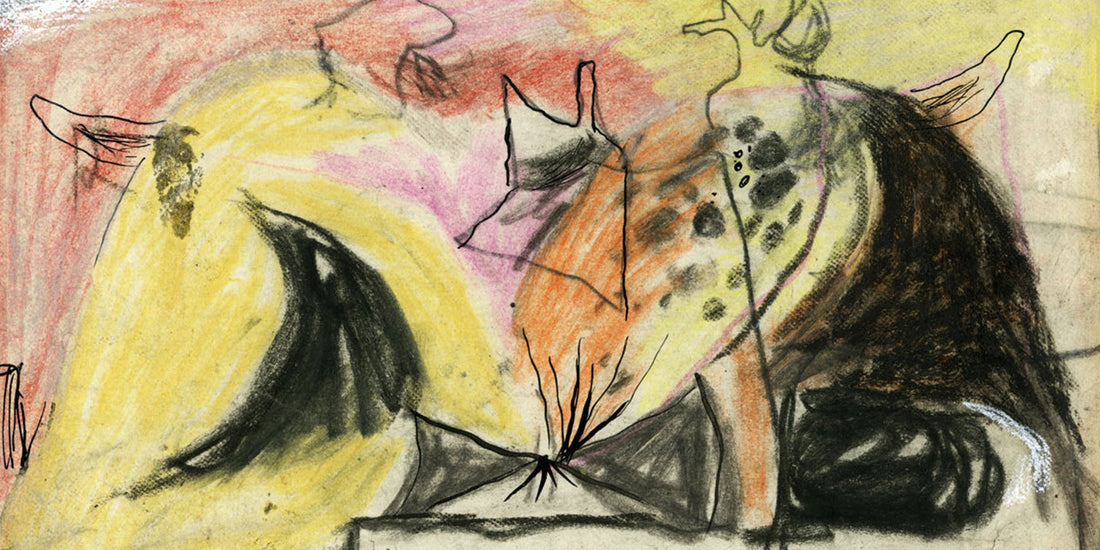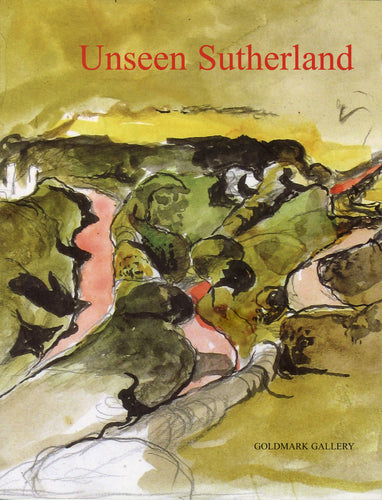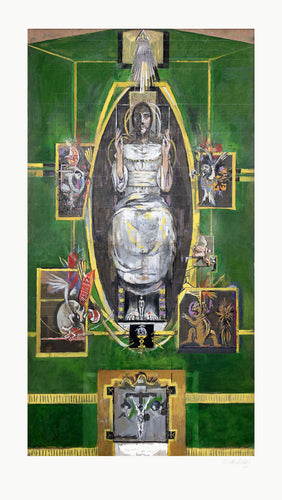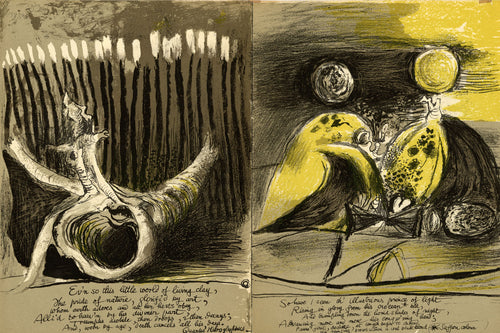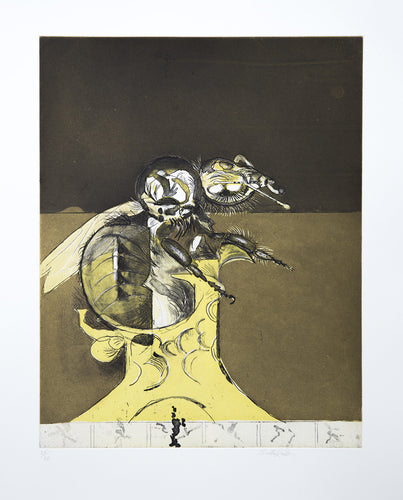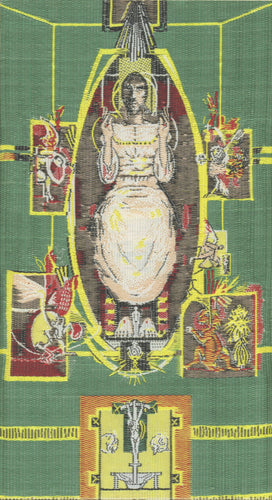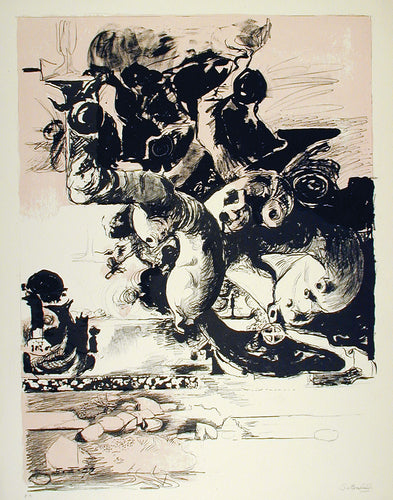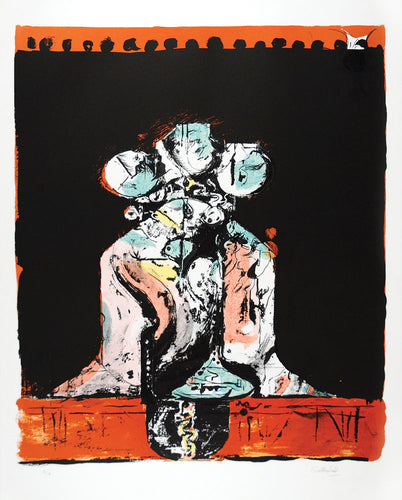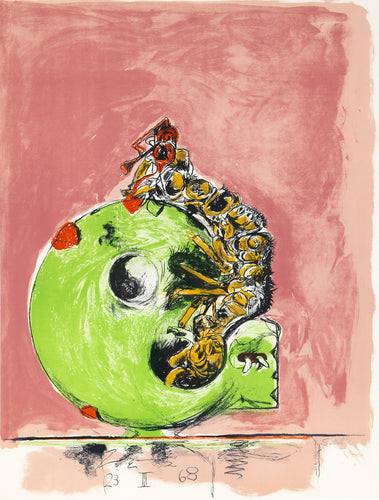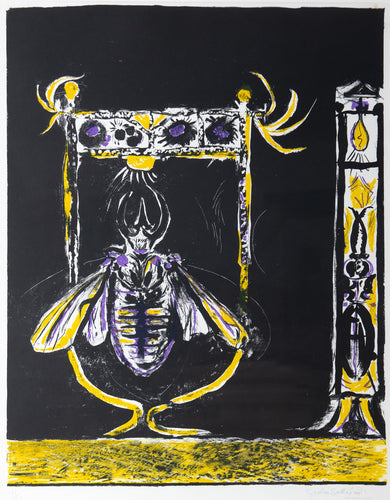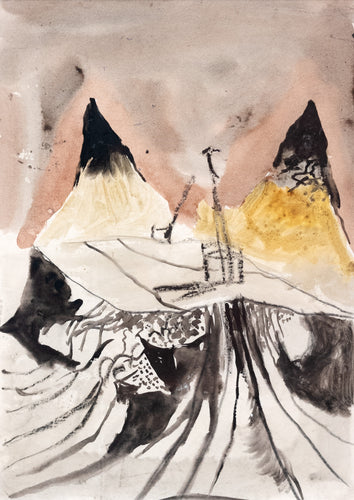When he was just 18 years old working as a trainee engineer in Derby, Graham Sutherland was trapped within the boiler of a shunting engine. Dropping through a twenty-inch dome into the cramped metal can below, he found he could not get out. The claustrophobia he experienced during his enclosure stayed with him for the rest of his life. He became intermittently agoraphobic – 'to cross a street was agony' – and the feeling of confinement spread insidiously into every corner of his mind: ‘I found I couldn’t go to church without considerable distress – I felt I was hemmed in and couldn’t get out.

If what Sutherland sought in his art was a ‘way out’, as the artist George Shaw has suggested, then he certainly found it in Pembrokeshire. He first discovered the west Welsh county in 1934, whose twisting estuaries, ancient root stumps and hills that sloped like dragons’ backsides instilled in him a need to paint. It was a landscape to which he would return regularly pre- and post-war, and which would inspire some of his most vital imagery.
 later Pembrokeshire sketch by Sutherland
later Pembrokeshire sketch by Sutherland
By 1943, when Folded Hills and its precursory studies were begun, Sutherland had been employed as an Official War Artist. He never left Britain during his service, becoming instead one of few such artists to document production and ruin on the mainland. Between sketches of crumbling London suburbs and exploded steel girders, Sutherland would revisit scenes of the Welsh countryside – rock forms, thorns and tiered mountains – exploring both subjects with equal intensity
 wartime sketch from a foundry
wartime sketch from a foundry
In Study for Folded Hills Sutherland creates a striking amalgam of these two very different worlds. Acid yellow mounds, converging to pink and orange, burn against a red sky like the flames he had painted just months before at the Woolwich steel furnaces. The black boulders that roll down one hillside are drawn in the same sooty charcoal he had seen smeared on foundry workers’ brows. The palette is one of caustic urban heat, the shades of rust and fire that characterise much of Sutherland’s oeuvre and which spoke to the artist Brian Catling of ‘industrial oxide [reeking] of alarm and warning.

Yet unlike many of Sutherland’s images of the Blitz, in which his claustrophobia was to some degree relived, here – as in all the sketches of Pembrokeshire - compression breeds life. His squat hills bulge against one another like dividing cells, pinched at the base by a spider of black ink. Searching pencil lines trace trees and tangled branches that extend like insect feelers. The condensed worlds of lichen, moss and thicket are enlarged to macroscopic scale.

 two later Pembrokeshire twin peak sketches, perhaps made around the same landscape as 'Folded Hills'
two later Pembrokeshire twin peak sketches, perhaps made around the same landscape as 'Folded Hills'
As with most of Sutherland’s landscapes, we cannot know for certain where the Folded Hills lie. Rarely was it his intention when sketching to ‘map’ a topography; more important was the emotional response, the peculiar details that alone drew his eye to this spot or that perspective. ‘Out of the thousand things I see’, Sutherland writes, ‘one juxtaposition of forms above all others seems to have a meaning…in the studio one remembers: one’s encounters become redefined, paraphrased and changed into something new and different from that of the first encounter – yet the same.
 (above and below) two lithographs from Sutherland's 'Poetry London' illustrations
(above and below) two lithographs from Sutherland's 'Poetry London' illustrations
Wherever he found it, the view of these two hillsides appears to have struck a chord. In addition to the 1943 canvas, no fewer than seven sketches in watercolour, gouache, chalk and pencil appear to depict the same horizon line. In the same year, the folded hills featured as one of a series of lithographic illustrations to Francis Quarles’ Hieroglyphics published in Poetry London.

As Sutherland returned each time to the peaks, different elements of their character were warped and distorted: in some, he emphasises the sensual curve of each hill, transforming them into a pair of giant golden breasts; in others, the same mounds metamorphose into fattened chicks, their beaks discernible in this study in two hasty scribbles of pen. Much as the forms themselves within individual sketches seem almost to multiply, each new iteration of the scene engendered yet more experimentation.

Entombed all those years ago within the locomotive boiler, Sutherland found the closeness suffocating. That very real sense of anxiety and asphyxiation found a voice in his wartime sketches of tin mines, arms factories and hydraulic presses. But here in the teeming landscapes of Pembrokeshire, closeness signals life and generation. Sutherland’s ‘Folded’ hills are in fact unfurling; from below they issue forth all manner of organic life.
